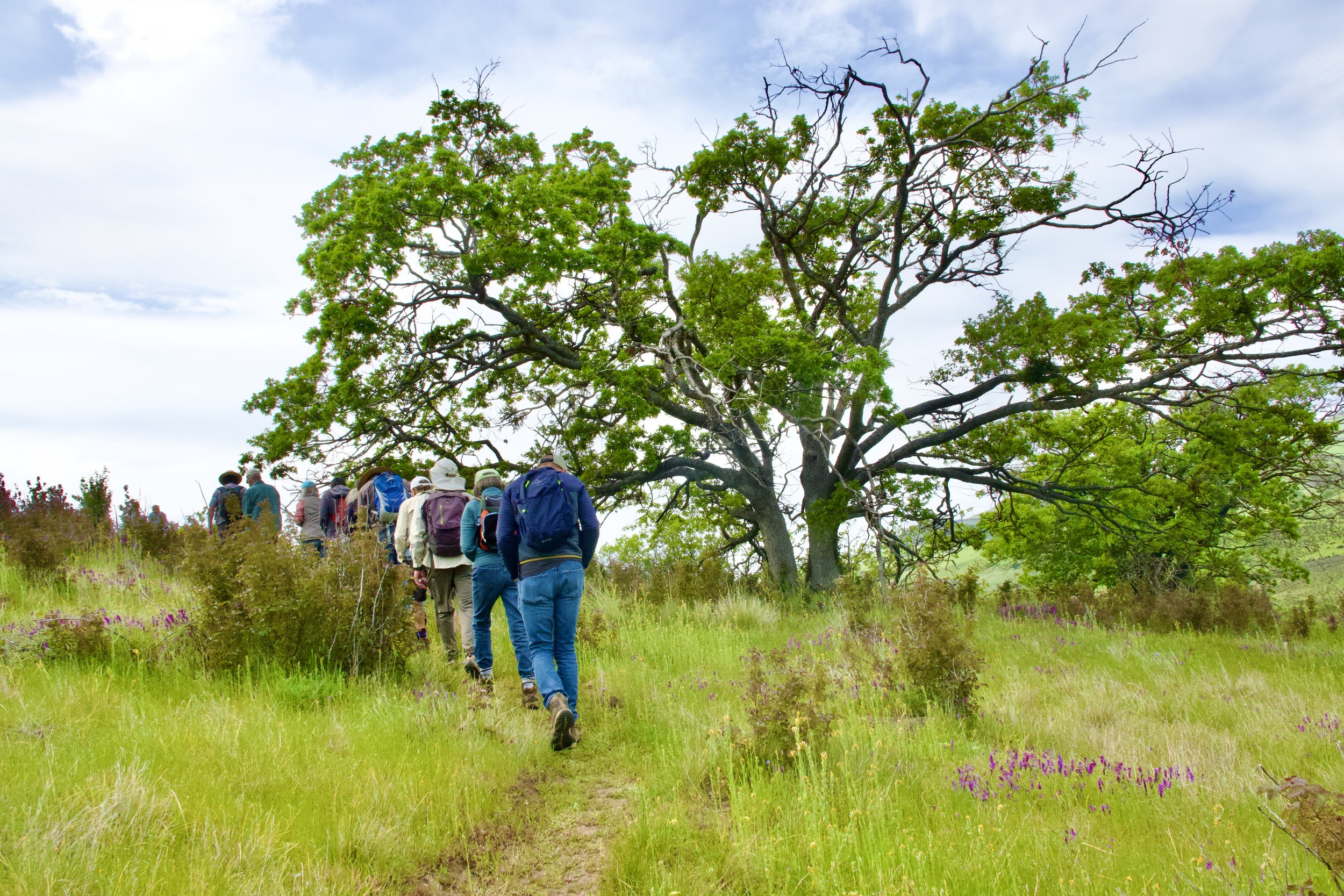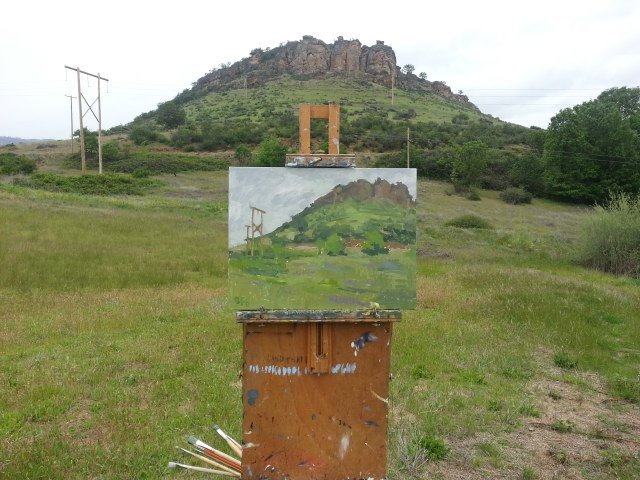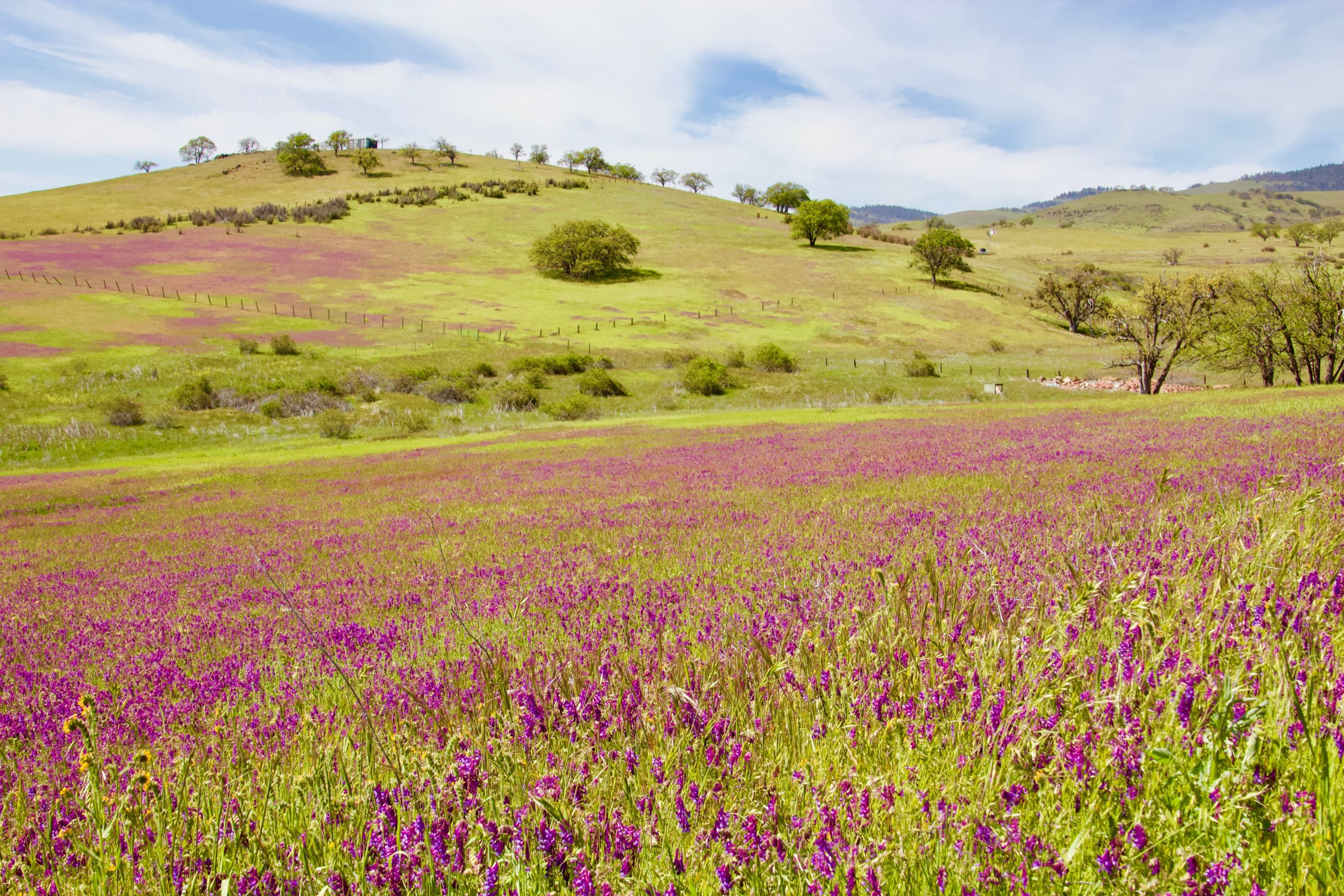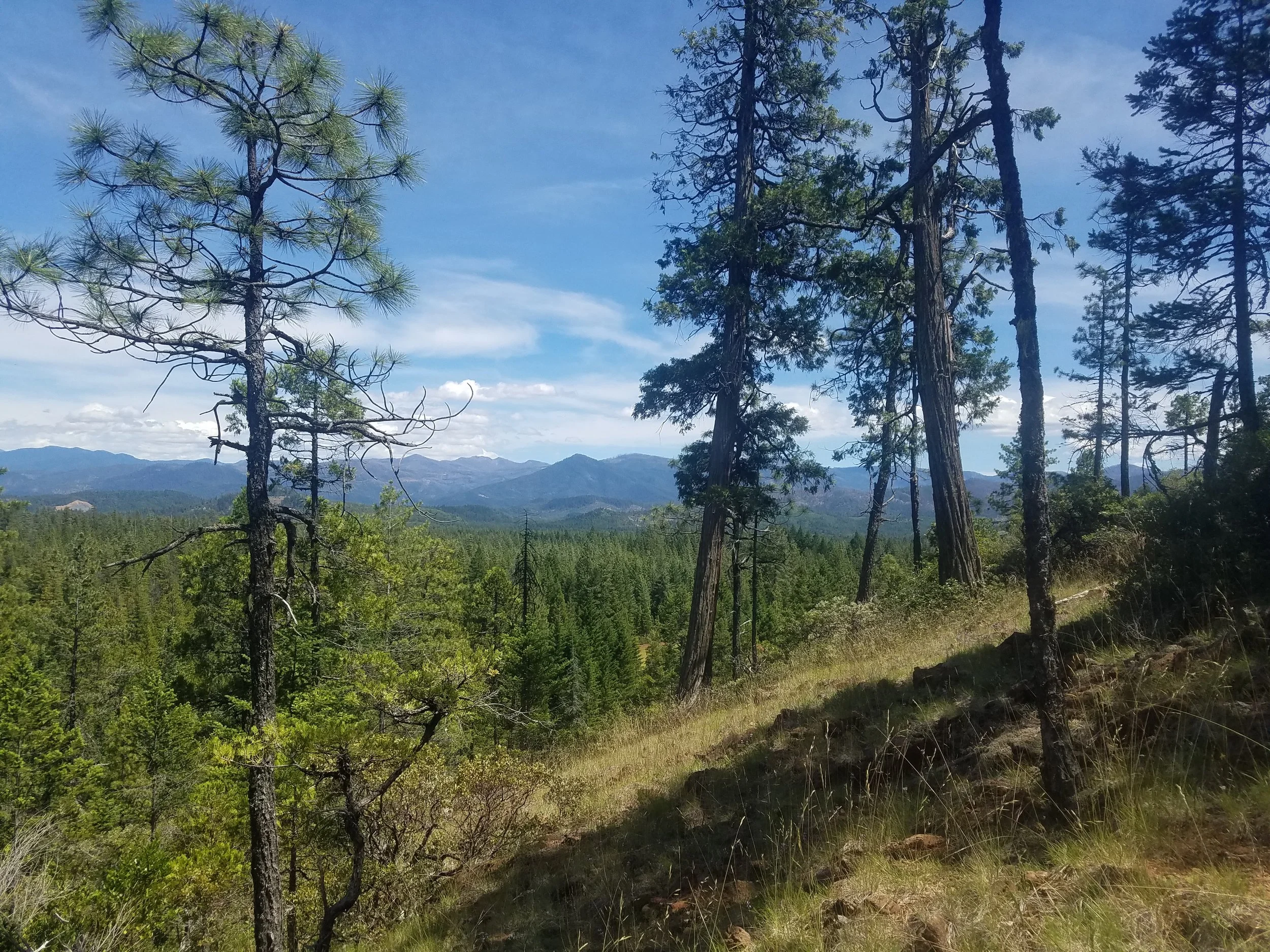"Peter and the Snakes "
We are blessed with the best volunteers! Peter Kleinhenz just graduated from the Masters of Environmental Education Program at Southern Oregon University, but while in school, he still found time to volunteer with us. At the last Ashland Where You At, a natural history community event, he dazzled the crowd with a short and passionate presentation on local snakes. More recently, Peter, with his reptile-loving friend Colin Guiley, conducted a preliminary reptile and amphibian survey of the Rogue River Preserve. While flipping over rocks, they found many critters, most notably a Common Kingsnake, although this snake isn't ALL that common in Oregon. Don't let the name fool you. The species is considered "Sensitive - Vulnerable" in the state of Oregon, and is quite the looker!
Read more about the Common Kingsnake as well as some of the other reptile species spotted at the Rogue River Preserve from Peter Kleinhenz's report below:
5/16/15
Herpetofauna Observations
Rogue River Property near Dodge Bridge
Overcast, 70 degrees F, Arrived at 1:30 P.M.
Peter Kleinhenz & Colin Guiley
Species: Pacific Tree Frog (Pseudacris regilla)
Where Observed: Tadpoles observed in floodplain pools south of access road.
Status: Abundant in floodplain habitat.
Species: Bullfrog (Lithobates catesbeianus)
Where Observed: Tadpoles observed in floodplain pools south of access road.
Status: Abundant in floodplain habitat.
Species: Western Fence Lizard (Sceloporus occidentalis)
Where Observed: Basking on railroad ties near entrance gate, on protruding rocks above middle terrace south of access road, under rocks flipped on middle terrace north of access road.
Status: Abundant wherever basking structures are present
Species: Western Skink (Plestiodon skiltonianus)
Where Observed: Under logs in open buckbrush south of access road, under rocks on slope above middle terrace south of access road, under rocks and logs flipped on middle terrace north of access road.
Status: Abundant. Observed every time cover was flipped in areas where plenty of rocks and logs littered the ground.
Species: Southern Aliigator Lizard (Elgaria multicarinata)
Where Observed: At base of buckbrush south of access road, south of access road on middle terrace near large log, near rock outcrop west of Rogue River slough on north end of property, juvenile seen along middle terrace slope north of access road.
Status: Common. Seen throughout the property but not flipped as often as expected.
Species: Pacific Gopher Snake (Pituophis catenifer)
Where Observed: One adult found under a large rotting log along east side of middle terrace south of access road, not far from property line.
Status: Likely Common. Although only one was observed, large rodent populations and varied cover led us to believe that the population of gopher snakes on the property was healthy.
Species: Mountain Garter Snake (Thamnophis elegans elegans)
Where Observed: Two adults observed on edge of floodplain forest north of access road where the middle terrace meets the blackberry growing on the edge of the forest.
Status: Likely Common. Large numbers of frogs (Pacific Tree Frogs and Bullfrogs) along with varied cover and healthy riparian habitat probably supports a healthy population of this species.
Species: Common Kingsnake (Lampropeltis getula)
Where Observed: Juvenile found under a small (6 inch diameter) rock where grown-over road meets middle terrace south of access road.
Status: Rare. Only one juvenile was observed during an extremely thorough search in prime habitat targeting this species. This species can be secretive but conditions were conducive to finding them. A breeding population likely exists on the property, but densities are probably low.
Potential Occurances
Western Racer (Coluber constrictor): This species almost certainly occurs on the property, especially in the open buckbrush habitat and the rocky areas near the middle terrace.
Ringneck Snake (Diadophis punctatus): The rocky edge habitat along the middle terrace offers excellent habitat for this secretive species. Future surveying may turn it up.
Common Garter Snake (Thamnophis sirtalis): This species almost certainly occurs on the property, especially on the middle terrace and the floodplain forest closer to the Rogue River.
Northwestern Garter Snake (Thamnophis ordinoides): This species could occur on the property under rocks and logs near the middle terrace. Its distribution in Jackson County is scattered so it is possible that it could be turned up on any large piece of property offering suitable habitat, such as this one.
California Mountain Kingsnake (Lampropeltis zonata): The rocky outcrop near the north end of the property near the seasonal stream could provide habitat for this rare and secretive species.
Striped Whipsnake (Masticophis taeniatus): This species most likely does not occur on the property, but the chance exists. They are documented near the property at the base of Upper Table Rock in very similar habitat to the open buckbrush habitat closer to Rogue River Drive on the property.
Western Rattlesnake (Crotalus viridis): The rocky outcrop near the north end of the property near the seasonal stream could provide important summer habitat for this declining species. Strong populations exist near the property, but areas for the snakes to disperse to are extremely limited in the area.
Sharptail Snake (Contia tenuis): This species almost certainly occurs on the property, especially under rocks and logs in moist areas by the river or on the middle terrace. Its secretive habits make it seem rarer than it actually is and future work will likely uncover the species on the property.
Western Pond Turtle (Actinemys marmorata): This species has been observed previously but the habitat it would occupy was inaccessible to Colin Guiley and I.
Roughskin Newt (Taricha granulosa): This species could be present in the floodplain pools on the property, as well as in the Rogue River.
Long-toed Salamander (Ambystoma macrodactylum): The species may breed in the floodplain pools on the property and have been documented near Lower Table Rock.
Pacific Giant Salamander (Dicamptodon ensatus): The species almost certainly occurs in the Rogue River along the property but was not searched for in this survey.
Western Toad (Bufo boreas): This species has been documented from nearby Denman Wildlife Area and the floodplain pools offer prime habitat for this species. Bullfrogs may be limiting their numbers if they occur on the property.
Significance of Common Kingsnake Observation
The common king snake has the second-most limited range of any snake living in Oregon. The species has been observed on a few occasions in the Applegate Valley but, otherwise, it lives in the Rogue River valley of Jackson and Josephine Counties with an isolated population persisting east of Roseburg in Douglas County. The species is considered “Sensitive – Vulnerable” in the state of Oregon. Colin Guiley has searched for snakes in southern Oregon for over 25 years and the individual found in this survey was the first he has seen in the state. The observation of a juvenile confirms that the species is breeding on the property. Colin Guiley and I believe that the property probably represents one of the best remaining habitats for this species in southern Oregon. There is abundant cover, food, and room for dispersal at the site. The connectivity the property has to the adjoining park is also critical for a species like the common kingsnake to persist in the region over time.
Issues As They Relate to Reptiles and Amphibians
The prevalence of Himalayan Blackberry at the site, especially on the edge of the floodplain forest south of the access road is probably affecting reptiles negatively. The blackberry can cover basking structures like logs and rocks, and favors edge habitats that are also favored by most snakes that live on the property.
Bullfrogs are probably affecting amphibian populations in a negative way on the property. These voracious predators can consume not only frogs and salamanders, but small snakes and turtles as well. It is possible that the property could house a population of Western Toad (species of concern) and/or Long-toed Salamander but neither species is likely to be present in areas of high bullfrog density.
Other Species Observed During Survey:
Acorn Woodpecker
Western Bluebird
Western Meadowlark
Tree Swallow
Anna’s Hummingbird
Ash-throated Flycatcher
Dragonfly (four brown spots on wings)
Red-tailed Hawk
Turkey Vulture
Dragonfly (solid gold color)
Rufous Hummingbird
Lark Sparrow
Western Scrub-Jay
Mourning Dove
Spotted Towhee
Black-tailed Deer
Ground Squirrels
American Robin
Tiger Swallowtail
Osprey
Black-headed Grosbeak
White-breasted Nuthatch
Pileated Woodpecker
Western Kingbird
Lesser Goldfinch
American Goldfinch
California Quail












